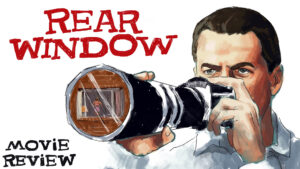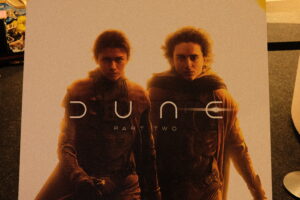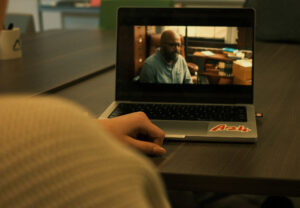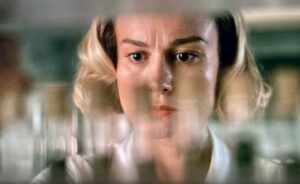3 Stars
“The Call of the Wild,” a new release directed by Chris Sanders, is based on the infamous Jack London novel of the same name and centers around a dog, Buck, and his adventures in the Yukon region during the Klondike gold rush of the 1890s.
Buck is a charming and emotive dog brought to life by CGI motion capture. You may have seen some of the videos that circulated prior to the film’s release of Harrison Ford in front of a green screen talking to a man on all fours in a motion-capture suit. It appears on a surface level to be a misstep to rely so heavily on CGI and motion capture in a film that centers on the exploration of the natural world, and by and large, this observation holds true. The lack of an actual dog and the use of such technology certainly dispels any sense of realism. However, it does produce curious character interactions.
In animal movies that cast real animals, there is usually a disconnect between the actors and their domesticated counterparts that can feel comical as animal reactions are hard to control and predict. “The Call of the Wild” manages to sidestep this issue entirely. Buck, whose motion capture was done by Terry Notary, is unsurprisingly treated by the other actors like a human. That is to say, generally, they appear more emotive and open to conversing with Buck, and there is a back and forth between human and canine character in this regard. This aids in establishing a connection between the audience and Buck, even if at times it doesn’t feel the strongest.
The relationships Buck forms along the way with Yukon mail carriers Perrault and Françoise (played by Omar Sy and Cara Gee respectively) and prospector John Thornton (Harrison Ford) add warmth to the story but lack a sense of purpose. The plot has several issues with how it presents the story of Buck in that it doesn’t quite know what it wants for the main character. There is a lack of development, likely due to the difficulty of explaining the mindset of a dog, which Ford’s narration tries to do, but to a large degree fails. It’s harder still to understand what Buck wants or why he is on this adventure when events are happening to him and not because of him. The shuffling from one master to another hampers the depth of any relationship Buck is able to establish with his human companions. That being said, the movie does eventually hit some sort of stride when Ford, who plays a thoroughly convincing grumpy old man, is paired with Buck in the movie’s third act. Their partnership yields some very touching moments and feels like the story we deserved from the get-go.
There are several other missteps that, while perhaps minor by themselves, add to a general sense of mediocrity. The failings of CGI are mostly to blame, as lighting discrepancies and odd scene transitions are prevalent. There are also other nagging details, like when Buck and Ford come out the other end of a waterfall with Buck being soaked in digital water and Ford bone dry. Similarly throughout the film, the characters are consistently placed in frigid environments, yet I cannot once recall seeing any of the characters’ breath in the cold, and there are several panoramic scenes that are meant to display the natural beauty of the Yukon wilderness, but can almost immediately be distinguished as CGI, eliminating any sense of awe. CGI can be and has been effectively used in films for years to further narratives, but in this case, it feels overused and underdeveloped.
“The Call of the Wild” is assuredly a mediocre movie, but one with genuine moments of suspense and joy. Overall the adventure flick has its place in the cinematic landscape, even if it’s only to pass the time with family or friends.











